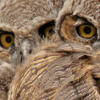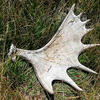Whether you're hiking, camping or simply enjoying the outdoors in your backyard, there is so much to explore! You don't have to go far to find a rich diversity of animals, insects, plants and more! With the right tools and resources, you can learn about why a firefly glows, what native species inhabit the nearby woods, and which insects are roaming around your yard. Or grab a telescope and look to the skies to make amazing stellar observations.
There is a world of adventure out there! What will you discover?



